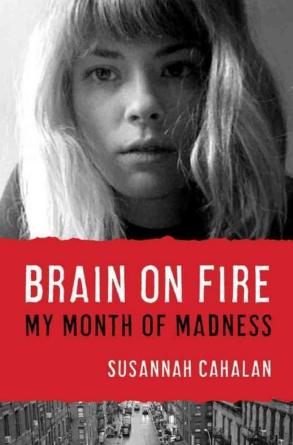By Taylor Johnson (The Cascade) – Email
Print Edition: January 30, 2013
 Every day we take the people who love us for granted. We don’t remember to call back, run late for coffee or simply forget to ask how their day is going. What would we do if all we had to rely on was those people? What if we were so unable to control our minds that our last hope was the people we neglected. Susanna Cahalan’s Brain on Fire: My Month of Madness is a chilling true story that reminds the reader of the effect the people around us have on our lives. Cahalan uses her journalistic skills to track down videos, witnesses and medical documentation in order to piece together her real life descent into madness.
Every day we take the people who love us for granted. We don’t remember to call back, run late for coffee or simply forget to ask how their day is going. What would we do if all we had to rely on was those people? What if we were so unable to control our minds that our last hope was the people we neglected. Susanna Cahalan’s Brain on Fire: My Month of Madness is a chilling true story that reminds the reader of the effect the people around us have on our lives. Cahalan uses her journalistic skills to track down videos, witnesses and medical documentation in order to piece together her real life descent into madness.
At the height of her career, Cahalan, a perfectly normal woman in her mid-20s, suddenly begins to show symptoms of horrific emotional swings accompanied with strange numbness in her extremities. Within weeks, Cahalan experiences violent seizures and is diagnosed with a handful of mental illnesses. Doctors claim she has everything from bipolar disorder to hallucinations, to epilepsy and extreme paranoia. In under a month, Cahalan’s life rapidly falls apart and she is admitted to a mental institution. Eventually diagnosed with an extremely rare and devastating neurological disease, which presents itself as a bunch of other diseases all at once (making it more difficult to diagnose), Cahalan slowly recovers. Throughout the months that follow, her family and friends do everything they can to keep her comfortable and emotionally stable. Once fully recovered, Cahalan retains no memory of her illness. She loses all memory of the time period she was in the hospital and the few weeks before her admittance.
Cahalan’s story presents a haunting documentary of an uncontrollable time in her life. She was fortunate enough to have the constant support of her friends and family, who kept her out of an institution and fought for her wellbeing. A captivating and thrilling read, her book allows readers into a devastating and horrifying time in her life, as well as into the mind of a normal person while descending into madness.
As an outside spectator, her tale seems completely unbelievable and surreal, however the medical notes and pictures she provides reminds the reader that they are reading a researched documentary, not a Hollywood horror story.

